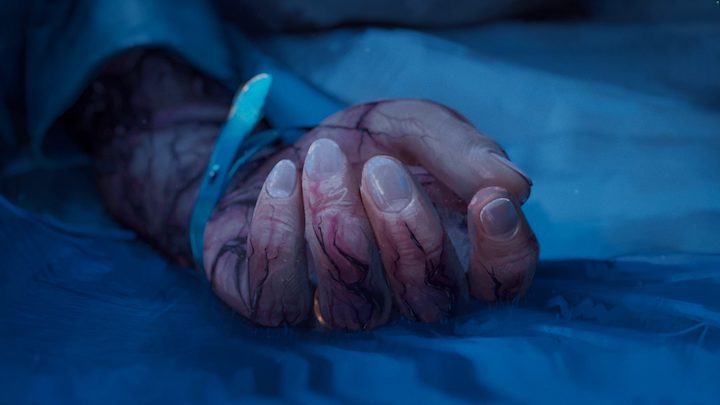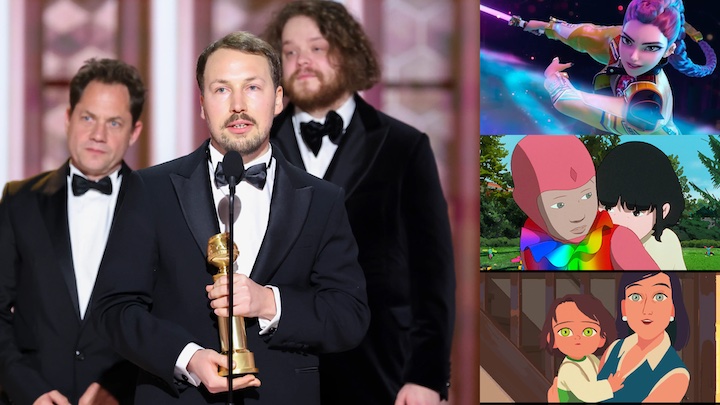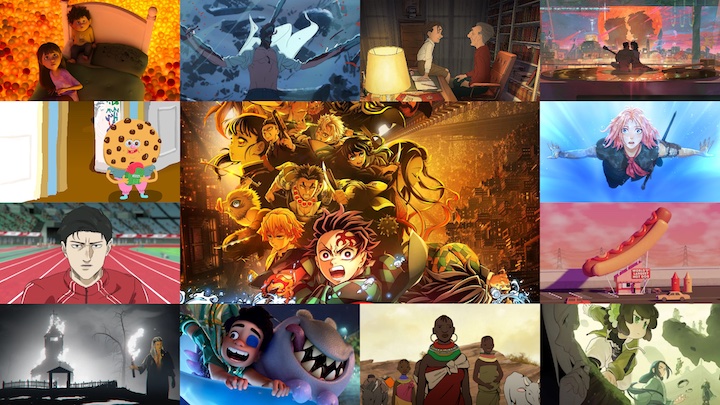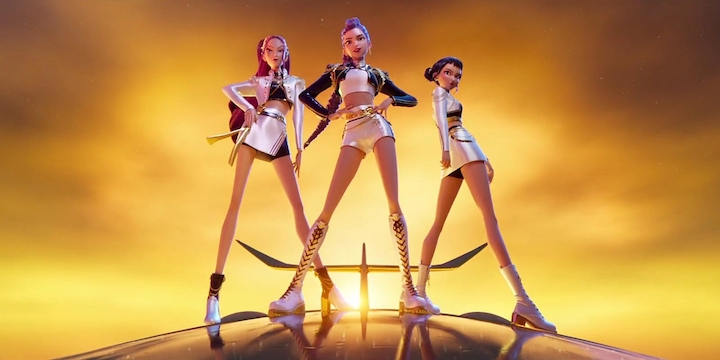A website dedicated to animation, awards, and everything in between.

Credit: Transferable (Agora Studio)
Transferable tells the heartbreaking story of a man slowly watching his wife drift away due to a mysterious illness. He has the power to take his wife’s pain and suffering away, but it’ll come at a great cost. Transferable marks the first original project from Agora Studio, which has been involved in projects such as Sonic the Hedgehog 3, Paddington in Peru, and Wicked, to name a few. Cartoon Contender recently spoke with Agora co-founder David Hubert, who co-directed Transferable with Jacob Gardner. The film comes from a personal place, being partly inspired by Gardner’s experiences with his own wife. Transferable has qualified for Best Animated Short consideration at the 98th Academy Awards through theatrical exhibition.

David Hubert, CEO/Co-Founder of Agora Studio and Co-Director of Transferable
Q: Agora has worked in animation, VFX, and video games. How did your experience on these projects prepare you to make Transferable?
A: Before founding Agora, we spent years working in the animation and game development industries, so the production process wasn’t new to us. Then with Agora, we’ve surrounded ourselves with amazing artists to cover the full range of expertise required to produce an animated short film, while also slowly building our own production pipeline. In hindsight, I wouldn't say we were fully ready to handle this production, but we've been quite efficient at building the rails as the train was going full speed.
Q: In what ways was Transferable uncharted territory for Agora?
A: Working for ourselves was a very different experience compared to working for clients. When it’s your own project, it’s tempting to keep pushing deadlines and endlessly polishing every shot. That turned out to be an unexpected challenge. We initially thought it would be easier to work on our own production, but the absence of external pressure to meet fixed deadlines made it more difficult to maintain momentum. It was also our first experience using Unreal Engine to produce a pre-rendered short film. The experience was invaluable, and it greatly contributed to our current expertise with real-time game engines. As we often joke internally, we started by using Unreal in just about every wrong way possible, but we learned a lot from it.
Q: How long was Transferable in production, and did the story change significantly over time?
A: Production spanned for over four years, about two and a half years of pre-production and one and a half years of full production. The story itself didn’t evolve much from Jacob Gardner’s original pitch. Some elements shifted during storyboarding; for example, the original concept featured an elderly man and his adult daughter, which later became a husband and wife. Other than that, and a significant change to the final shot, the film closely follows the version established in the final animatic we worked on years ago.
Q: How did personal experience shape the narrative of Transferable?
A: Transferable is rooted in deeply personal experiences, which brought a lot of passion to the production. We took that emotional foundation and amplified it within a near-future setting. The universal themes of empathy and sacrifice are grounded in real personal experiences, while the sci-fi elements were exaggerated for storytelling and entertainment purposes.
Q: A lot of viewers can identify with the protagonist’s struggle as he watches his wife combat a fatal illness, especially in a post-pandemic world. Did COVID at all influence the narrative?
A: Actually, COVID didn’t influence the story of Transferable. The real-life events that inspired the project took place before the pandemic. During production, we were concerned that audiences might associate the story too closely with the global experience of COVID, but we decided to move forward and tell it as intended anyway.
Q: Did you draw inspiration from anywhere while crafting the film’s visual aesthetic?
A: Our initial creative direction was to achieve a look that didn’t resemble highly polished CG. It was a vague and ambitious goal, but one we were determined to explore. Over time, major productions like Spider-Verse and Teenage Mutant Ninja Turtles: Mutant Mayhem embraced similar stylistic approaches, and we found ourselves pursuing comparable techniques. Ultimately, we discovered our visual style through trial and error. Agora’s current Art Director, Rémi Larroque, joined the project quite late in production but brought the creative and technical expertise needed to achieve the film’s final look.
Q: Transferable has qualified for Oscar consideration through theatrical exhibition. What have the responses from audiences been like when you screened the film?
A: Transferable tends to be a deeply emotional experience for those who connect with it. We’ve received overwhelmingly positive feedback from viewers who resonated with its themes and were visibly moved by the story. Others who didn’t relate as personally found it less impactful, which is understandable since the film speaks most strongly to those who see part of their own story reflected in it. Ultimately, we made the film we wanted to see ourselves, without committee decisions or audience test screenings to ensure broad appeal. Our goal was never to create entertainment that would please everyone, but rather a passion project that hits deeply for those it reaches, even if it leaves a lighter impression on others.

Credit: Transferable (Agora Studio)
Q: Transferable functions beautifully as a short, but I could also see this idea working as a long-form narrative. Could you?
A: Definitely. That was a conscious choice. We wanted the short to leave audiences with the sense that there is much more to explore in this world. Balancing closure with open-ended intrigue was challenging; some viewers even noted that the ending felt unresolved or raised more questions than it answered. Those are fair observations, and if given the opportunity, we would love to return to this world and develop the many other stories we imagined during production.
Q: If ever given the budget, would you be interested in expanding the premise into a feature?
A: We would, although we have always felt that Transferable might lend itself better to a series format. Ideally, it would be something between Love, Death & Robots and Black Mirror, a collection of self-contained episodes that each explore a different creative and narrative perspective within the same universe.
Q: What other projects would you like to pursue on the heels of Transferable?
A: Transferable gave us a taste of creating original content, and since then, we have been developing several other IPs. A-COM, the cinematic introduction of characters designed specifically for Agora Community, is one example. Zoomies is another, and it has had the most exposure so far, with short episodes on TikTok and Instagram reaching millions of views and building a following that exceeded our expectations. We also have another IP in development, scheduled for release in 2026, that we are very excited about.
In the end, Agora was founded by artists and creators, so it feels completely natural to develop our own worlds, characters, and stories after so many years of providing creative services to studios across the animation industry.
To learn more about Transferable, visit Agora's website and Instagram.
Nick Spake is the Author of Bright & Shiny: A History of Animation at Award Shows Volumes 1 and 2. Available Now!






